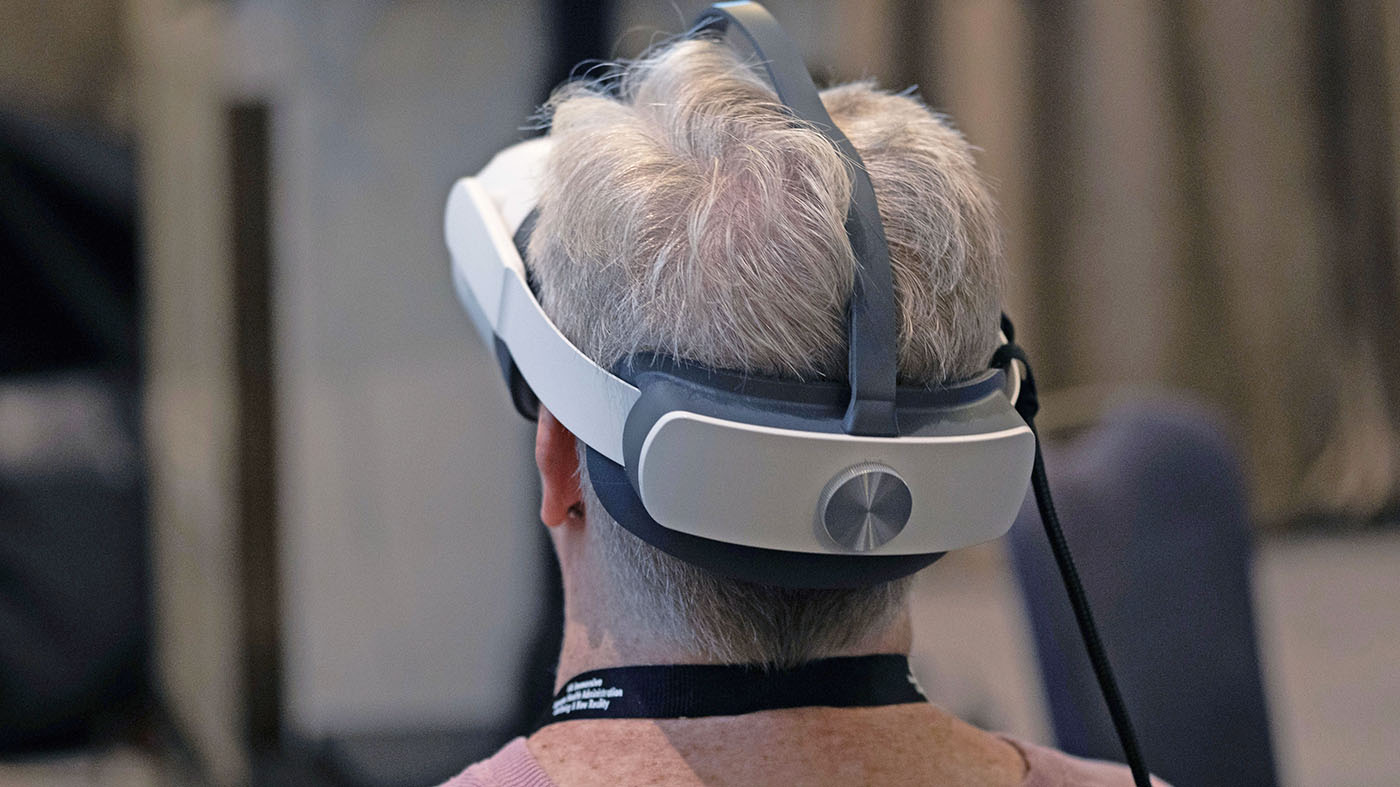Immersive technology like virtual reality (VR) is providing new hope to Veterans with treatment-resistant depression (TRD) at San Diego VA’s neuromodulation clinic.
Nursing informatics specialist Kevin Sojourner, a Marine Veteran, talked about the program, which integrates meditation in VR before and after ketamine therapy to help decrease anxiety. It has demonstrated exciting, measurable results.
Ketamine therapy
Ketamine therapy is prescribed to address the challenges of patients with severe depression who have tried numerous medication-based and behavioral therapy approaches without success.
“A depressed brain is working at hyper-speed, so it doesn’t really have an opportunity to heal because it’s always going,” Sojourner said. “You introduce an element like ketamine, a dissociative drug. It makes you feel like you’re having an out-of-body experience and looking at life from different perspectives. It can also help those who experience depression due to chronic pain. This opportunity to dissociate helps them to manage that pain differently.”
In 2019, Sojourner observed that patients at the neuromodulation clinic were not having optimal experiences in their existing ketamine therapy program. He learned about VA Immersive nurse program manager Caitlin Rawlins, who was working at Western North Carolina VA and he was inspired.
He began piloting VR meditation with some of his more tech-savvy patients.
Introducing virtual reality
Now, the program uses VR meditation with most TRD patients as a bookend to ketamine therapy. Before administration of the drug, patients appreciate the transitional space meditation provides. Following ketamine, VR also provides a space for introspective reflection on their experience.
“It helps them shut the door on life before the treatment so they can take everything—all the external stimulus that they’re experiencing in life, and keep it outside the treatment room and focus on why they’re there,” Sojourner said.
In addition to the positive feedback from patients, Sojourner has measured the efficacy of the new approach. “I would take assessments prior to giving them the headset and after giving them the headset, and then again after the entire treatment was over to see if there was any benefit. It was a 12 to 20% improvement, which in the mental health world is amazing.”
This has the potential to greatly impact the broader health care ecosystem, particularly addressing the operational challenges in mental health care.
“Immersive technology helps make things more efficient. It’s not a replacement. It’s augmenting,” he added.
Combining immersive VR meditation with ketamine therapy exemplifies how innovating thinking and technology can enhance mental health care, creating new pathways for healing and personal growth.
This effort aligns with VA Immersive’s #headsinheadsets initiative, emphasizing the importance of immersive technology in the present and future of health care.
VA Immersive has deployed over 3,000 VR headsets across more than 170 VA medical centers and outpatient clinics in all 50 U.S. states, plus Puerto Rico, Guam and American Samoa.
Topics in this story
Link Disclaimer
This page includes links to other websites outside our control and jurisdiction. VA is not responsible for the privacy practices or the content of non-VA Web sites. We encourage you to review the privacy policy or terms and conditions of those sites to fully understand what information is collected and how it is used.
More Stories
Pacific Islands VA has opened a new urgent care clinic inside the Daniel K. Akaka VA Clinic.
From one battle to the next, including four types of cancers, Eliot Winokur’s resilience remains unshaken.
As severe weather threatened Mississippi, local news warned of a dangerous outbreak of tornadoes. A VA nurse stepped up.







How do I become part of, or apply for, VR meditation?